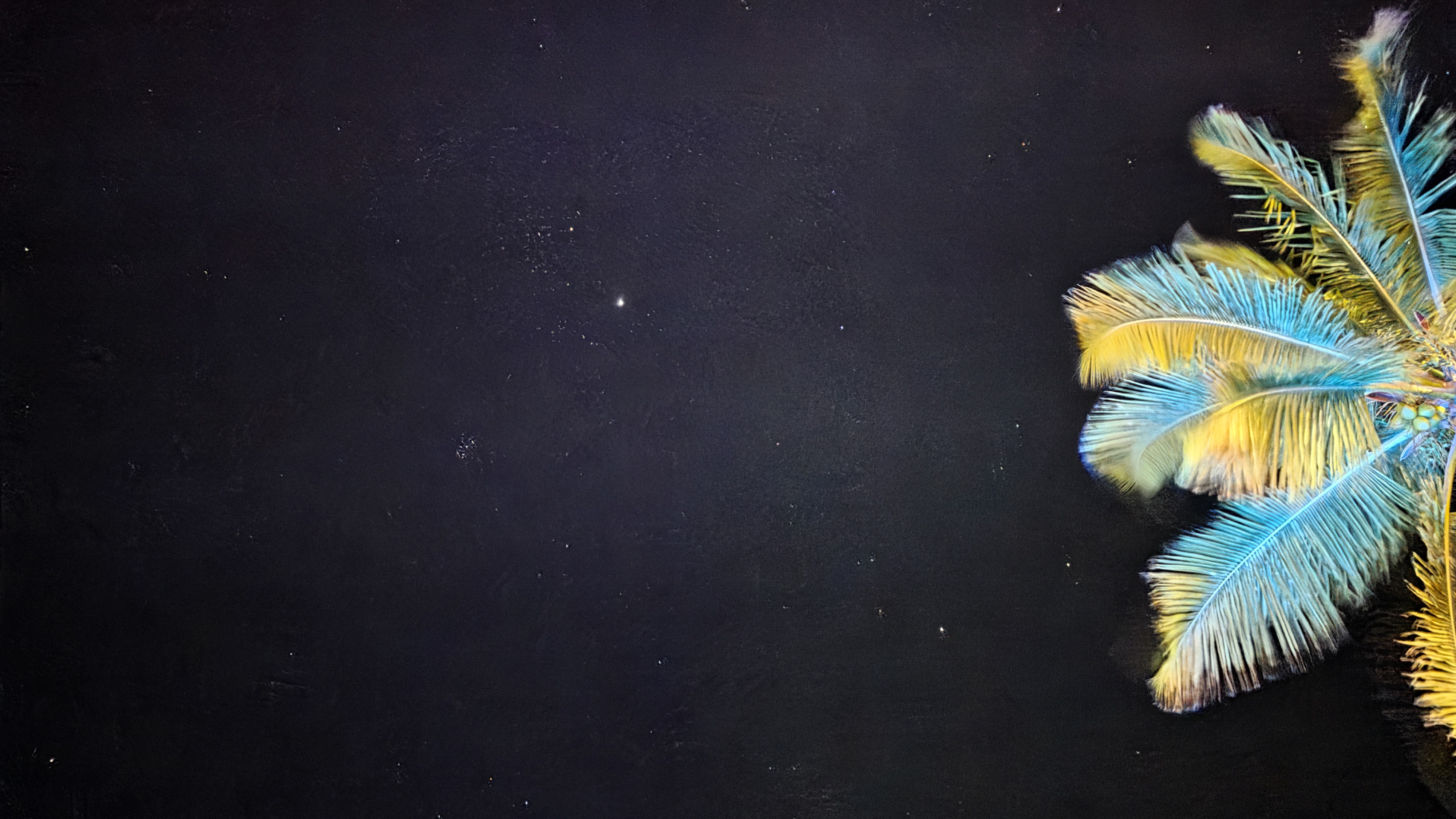My Samsung Galaxy S25 Ultra vs iPhone 16 Pro Max night photography shootout revealed a big Galaxy issue – but a fix is on the way
The night highlights differences big and small

Lying on the beach in Antigua, I stared up into the night sky, dazzled by the stars. A normal person would just sit back and enjoy the show; but I'm not normal, so I took out my two phones, the iPhone 16 Pro Max and the still very new Samsung Galaxy S25 Ultra, and started taking photos. What I discovered surprised me, and it might surprise you, too.
To understand how Samsung and Apple approach night photography, you have to start with how they handle smartphone photography in general. Both bring the best sensors and lenses to the party, but they also apply significant amounts of algorithmic image processing (aka computational photography) to make the best of what are relatively tiny lenses in devices not solely built for the job of photography.
Apple has its image processing pipeline, something it's been refining for well over a decade. The image signal processor uses a neural engine to analyze the scene being photographed in real time and make countless adjustments, both during and after capture, to produce the best image.
Samsung's ProVisual Engine does similar work during capture and before presenting the final image.
Taking the night
The two systems also now produce very similar results with, as I noted in my Galaxy S25 Ultra review, that phone pushing the limits on color saturation and skin smoothness to give almost every final image a slightly heightened sense of reality. I like the photos, but I think choosing between the iPhone and a Galaxy Phone's photography is now a matter of taste.
Night photography, or astrophotography, adds another wrinkle – and it's where, at least on methodology, Samsung and Apple differ, albeit only slightly.
Apple doesn't have a specific night photography mode. You just point your phone at the night sky and try to hold it very still while you take the shot. There are a pair of targets in the center of the image that align perfectly if you can hold steady through what defaults to a 3-second exposure. You can push that to 10 seconds, but then you better have a tripod or other support.
Get daily insight, inspiration and deals in your inbox
Sign up for breaking news, reviews, opinion, top tech deals, and more.
Samsung has a dedicated Night mode (it's hidden under 'More' in the Camera app). It, too, defaults to a 3-second exposure (the phone tells you to hold still during the shot); you can also select 'Max' and go for a full eight seconds, although again, without a tripod, it's unlikely you can keep your phone still for that long.
Hello stars, hello moon
Since I was on the beach and on vacation, I didn't have a tripod, so did my level best to hold still as I switched back and forth between the two smartphones. I'm an amateur photographer, and pride myself and my stillness skills (especially useful if, as I do, you like to take telephoto shots of tiny birds).
I took a bunch of photos, but in analyzing them, I found just a handful that I thought were directly – and fairly – comparable.
Broadly speaking, both smartphones do a decent job of taking night photos, but there were some surprising differences – and a couple of real concerns on the Galaxy S25 Ultra side.
In general, the iPhone 16 Pro Max does a better job with sky color and clarity. I think the Samsung Galaxy S25 Ultra's main 200MP camera captures more detail, meaning more stars, but the images are not as clean as what you get from the iPhone 16 Pro Max.
This first set of images below is a good example. As you can see, the Galaxy S25 Ultra image on the right has a lot more stars in it, but the sky color is gray instead of deep, dark blue, and I think Samsung's image processing had trouble with the ambient light. Granted, these were not the perfect conditions for night photography – what I really wanted was zero ambient light and nothing but the inky night above, but vacationing beggars can't be choosers.
A fly in the inkment
This next set of images not only illustrates the iPhone's considerable prowess at capturing stunning night images, it also highlights a significant issue with the Galaxy S25 Ultra.
While I consider both images pretty good considering the conditions – which included partial cloud cover – there's something in the S25 Ultra image that I didn't notice until I returned home and started reading reports about S25 Ultra night photography issues. There were reports of a hazy pattern on the images.
Initially, I thought these were clouds, but then I spotted the same pattern on my subsequent main-camera night photography shots. And when I saw the exact same pattern in an article that featured night photography images taken with the S25 Ultra, I realized it might be a real issue. I contacted Samsung, and sent them some of these images for analysis.
Without reflecting on my specific photos, Samsung sent me this statement: "We are aware of a limited number of cases where images appear blurred when taking photos in Night Mode on Galaxy S25 Ultra, and have issued a fix to resolve in the next software update rolling out starting this week."
I look forward to seeing if the update clears up this issue.
I'm not sure that I'd call what I'm seeing blurriness, but whatever it is, the pattern is even clearer in this next image set. As you can see, there are no similar patterns in the iPhone 16 Pro Max image on the left.
Juggling the dark and light
In this next photo set, we get to see how both phones handle the challenge of a brighter palm tree against the night sky. I was mostly pleased with both photos, though again the color of the night sky in the iPhone photo on the left is more accurate.
However, I also noticed a new, different issue in the S25 Ultra image. It has both the aforementioned hazy pattern anomaly, but also some serious image quality breakdown in parts of the night sky, in the form of what look like blotchy squiggles.
For these final shots, where the bright moon comes into play, I think the Galaxy S25 Ultra did a better job of maintaining star visibility against the challenge of multiple light sources. My only criticism of the S25 Ultra here would be that it over-brightened the lit objects. I was there, and the lighting was ambient, and not direct as suggested in this photo.
Pushing the limits and final thoughts
I did try some other shots, in particular a few where I tried to use optical zoom to capture the ultra-bright half-moon. Neither phone could lower the exposure enough to make it discernible as a celestial object.
Naturally, I had to try the Samsung Galaxy S25 Ultra's 30x space zoom which instantly gave me a stunning half-moon image (see below, right). But, as I've written, I no longer trust these photos because, as Samsung admits, they're "images" not photos, which I take to mean that they're a combination of AI magic and some photographic information.
Where the Galaxy S25 Ultra excels is in hyperlapse astrophotography. This is where you choose Hyperlapse (also under 'More' in the Camera app), set it to 300x, and then check 'Star Trails'. I took a few of these timelapse images, which can create an amazing swirl of stars circling around, for instance, the north star. Unfortunately, without my tripod, it was difficult to keep the phone planted for long enough to get the full effect. Even so, I wish the iPhone had a similar feature.
Here's what I learned. Apple's image pipeline is still, at least for night photography, more refined than Samsung's. It might not give you all the stars in the night sky, but what it does deliver is clear and often beautiful.
Samsung's Galaxy S25 Ultra is not far behind, but it needs a more subtle image-processing approach for the delicate work of night photography. In addition, that anomaly is a real thing that's repeated across all night shots I took with the main camera. I think it's an easy ProVisual engine fix, though, and based on Samsung's statement, I think they agree.
You might also like
- A near-complete Samsung Galaxy S25 Edge specs list has leaked, pointing to an even slimmer design than expected
- Best Samsung phones: top Galaxy handsets ranked
- Samsung Galaxy S25 Ultra review: the ultimate Android

A 38-year industry veteran and award-winning journalist, Lance has covered technology since PCs were the size of suitcases and “on line” meant “waiting.” He’s a former Lifewire Editor-in-Chief, Mashable Editor-in-Chief, and, before that, Editor in Chief of PCMag.com and Senior Vice President of Content for Ziff Davis, Inc. He also wrote a popular, weekly tech column for Medium called The Upgrade.
Lance Ulanoff makes frequent appearances on national, international, and local news programs including Live with Kelly and Mark, the Today Show, Good Morning America, CNBC, CNN, and the BBC.
You must confirm your public display name before commenting
Please logout and then login again, you will then be prompted to enter your display name.